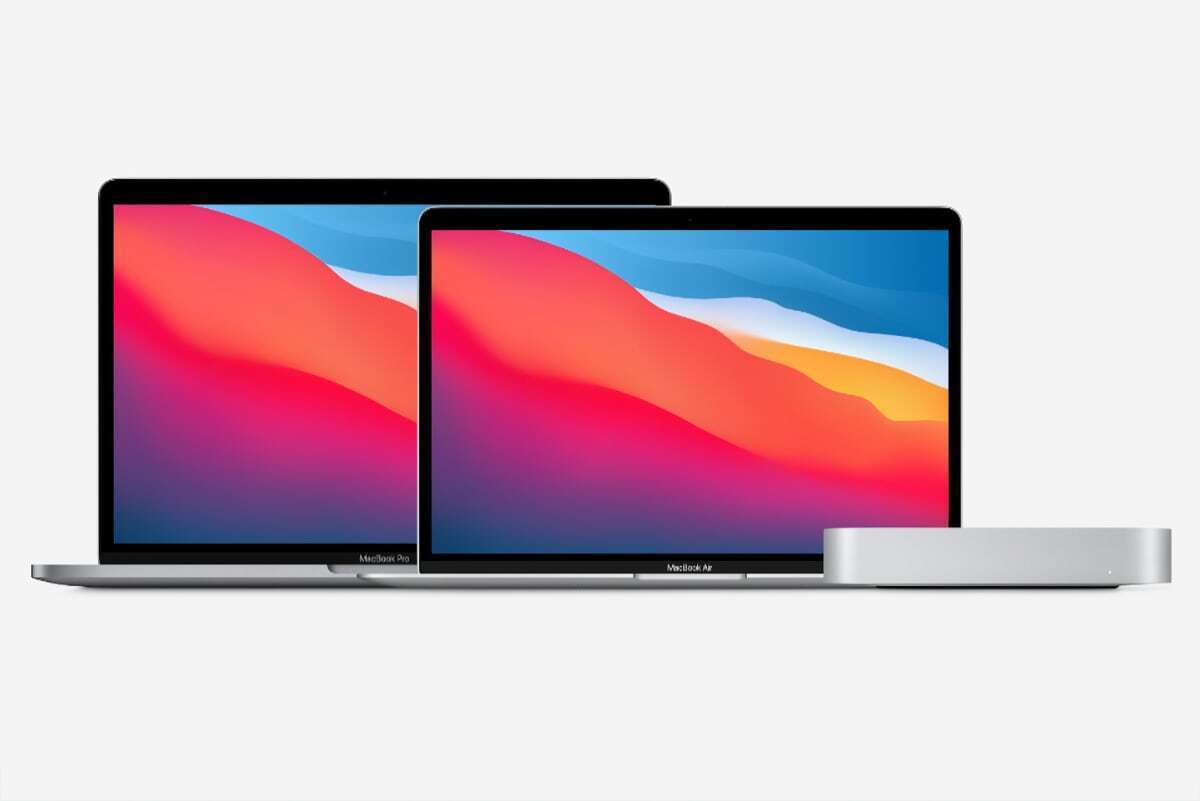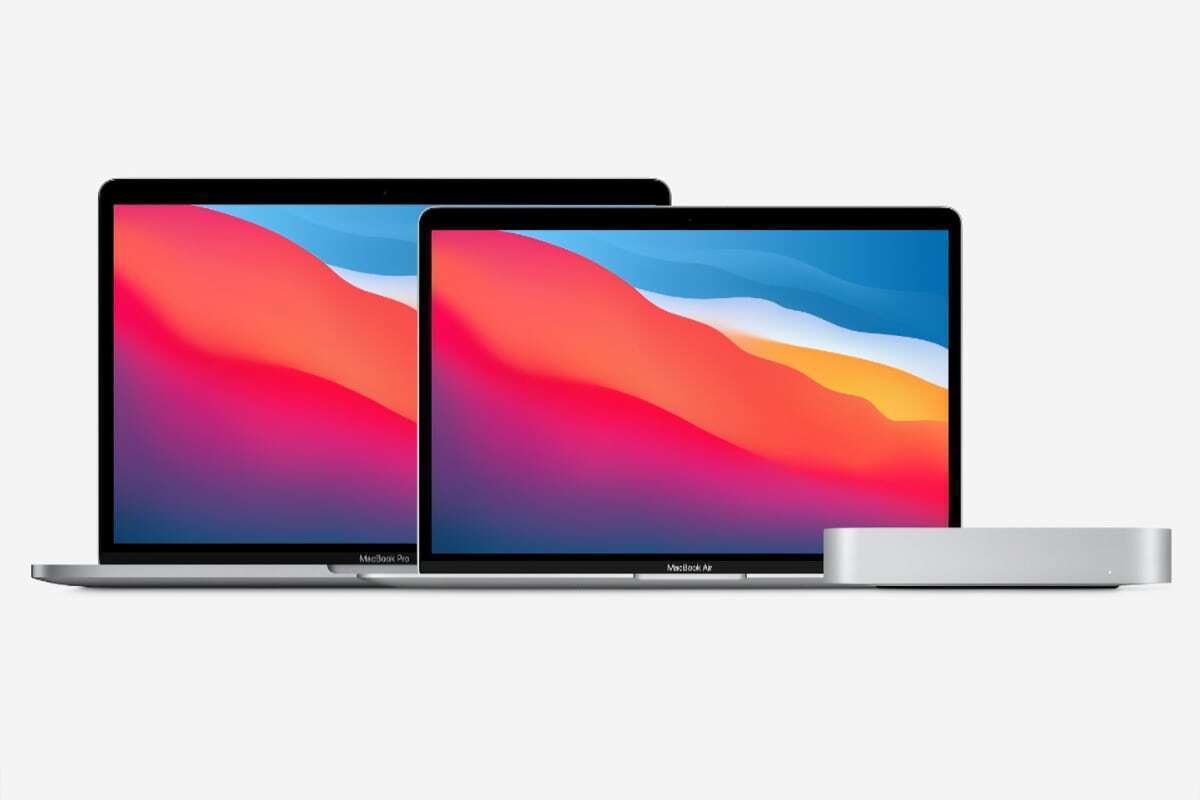
Apple’s first M1-powered Mac mini is short on flaws and big on promise, and it absolutely sells the company’s migration to its own Apple Silicon processors on its own.
What is the Mac mini?
Apple announced three Macs powered by Apple Silicon last week: the MacBook Air, 13-in. MacBook Pro and the Mac mini.
All three use an M1 chip, running an optimized operating system (Big Sur) and equipped with features such as unified memory, which helps boost and improve graphics performance.
I’ve been looking at the M1 Mac mini running macOS Big Sur 11.0.1. This is the entry-level mini. It hosts an 8-core Apple chip, 256GB SSD and holds 8GB of memory. (I smile when I look at what that memory — and Apple’s all-new unified memory architecture (UMA) — can achieve on this machine.)
It is worth noting this system is more than capable of running a Pro Display XDR — it must be, since it will run a second 4K display, as well. You can run two displays from a single entry-level Mac. (Add an iPad in Sidecar mode and you have three.)
Designed and developed by Apple, the M1 is a sophisticated System on chip (SoC) that is also the world’s first personal computer chip built using 5-nanometer (nm) process technology. It combines the CPU, GPU, security, I/O, memory and more on the chip and boasts 16 billion transistors; its UMA means it provides the world’s fastest integrated personal computer graphics.
Some have pointed out that these Macs only support up to 16GB of memory, but in my experience, this seldom acts as a performative ceiling to what the machines can do. In part, this is because Apple has designed the whole experience — including the software — so that performance is optimized. On other systems you need additional memory to make up for the lack of such on-system optimization, Apple appears to think. The fact the memory is built into the processor also means bandwidth is optimized from the start.
Put it all together and Apple claims the new Mac mini delivers processor performance three times that of its predecessor, graphics six times as fast and machine learning performance up to 15x faster. That’s also boosted by the tight integration between the Mac and Apple’s recently introduced Big Sur macOS.
How does the Mac mini perform?
About those Apple claims: the first Mac mini performance data seems to bear them out. Using Geekbench 5, the Mac mini returns a single-core score of 1,745 and a multi-core score of 7,704. Incredibly, this suggests these new Macs are currently the second fastest Apple computer money can buy in single-core performance. They also sit hot on the heels of the entry-level Intel-based iMac Pro when it comes to multi-core.
That’s astonishing performance from a $699 Mac.
It’s important to point out that Geekbench uses Rosetta 2 emulation, which suggests the performance of the processor may exceed the measured achievement. Rosetta is software Apple has built that enables M1 Macs to run applications designed for Intel processors.
Another test, CineBench, has been optimized for the M1 processor. These tests coalesced around 7,569 points in multi-core and 1,523 in single core performance.
That means when it comes to single-core, the only faster chip is the 2.81GHz Intel Core i7, which the M1 comfortably surpasses in multi-core performance. In other words, the M1 is already fast.
I ran a whole collection of applications to see how the Mac would perform in some real(ish) world situations:
Final Cut Pro
I applied effects and titles to a 12GB clip in Final Cut Pro. I admit that I haven’t made a great deal of use of FCP since version 4 in 2003, so my anecdotal experience is only that. But if I’d known that I could achieve these tasks in so short a time then as I can today on the new Mac mini, I’d probably have made more use of it. Splicing together different clips, adding effects and transitions, even adjusting colors — my mini didn’t seem fazed by a single task. iMovie, of course, becomes a real pleasure to use, as everything is so fast.
The real benefit is visible when it comes to rendering. Exporting an iMovie to the web seemed considerably faster than with an Intel chip.
Microsoft Word
Word hasn’t yet been optimized as an M1-native application, though presumably Microsoft is working on it. What is available is an updated version of Word that runs in Rosetta 2 emulation on the new Mac. Because it runs in Rosetta, you will experience a longer wait than usual when launching Word for the first time. That’s the only caveat, as Word will launch fast each time after that and I have no other complaints — so much so that I wrote this review on it.
Pixelmator Pro
I used Pixelmator’s ML Super Resolution tool to increase the resolution of a small scanned image from the late 90’s by 1,500%. The Mac achieved this operation in a few moments, and picture it created was so much better (and more detailed) than the original. I’m going to be using this single feature a lot as I try to bring some of my photo memories into the 21st Century.
Cinema 4D
I’ve never used Cinema 4D, but the application supports the M1 Mac, which meant I had to give it a go. I followed a series of online object-building tutorials. The Mac did everything I asked it to do, though I did see some brief rendering problems when I moved objects around or changed some parameters. It is, however, impressive that I could create and animate 3D objects on a Mac mini with 8GB memory; this bodes really, really well for Apple’s pro Macs next year.
Play some games
I’ve always enjoyed the Civilization and Total War series of games. I like that you must become deeply involved in planning, strategy and execution, but I’ve always found both challenge the computers that run them when playing late-stage games in which the scenarios become really complex. Do they play on Mac mini? Yes. Did they crash? Not while I played them. And I’m a little obsessive. Fortunately, I also got to…
Mix some beats
I once ran one of London’s iPod DJ clubs. We’d get people to turn up with their songs and give them 15-minutes to play their favorite tunes. Good DJ’s won prizes donated by companies, including Gear4.
The club didn’t last, but these days almost every DJ is making some use of digital music during their set. Much to the displeasure of my housemates, I used the demo version of DJay Pro AI to mix tracks together, changing the bpm and applying effects, flanges, echoes and fades to individual musical components to my heart’s content.
The Mac didn’t skip a beat, which is pretty important when you’re a DJ.
Pity the people I live with as I then spent an hour making extraordinarily average metal songs with my guitar and GarageBand. The only wall I hit was my own limited talent. The Mac wasn’t even warm to the touch.
Apple’s applications
I opened every Apple app I regularly use on the Mac. The company says it has optimized all of its applications to run natively on Apple Silicon. This seems to be the case. For me, the only significant difference seems to be that all these applications seem to load more swiftly than they do on my Intel Macs. Most apps launch almost immediately, the only exception being apps using Rosetta translation. That’s not a problem with Apple apps as these all run native to M1.
iPhone and iPad apps
First things first: Not every iPad or iPhone app is available for an M1 Mac. Developers get to decide if they wish to make them available. The ones that are available have been tweaked so they become much more Mac-like. There’s a small Apple-curated collection of these already. None will stretch your computer, but it seems very useful to get access to all that software on your Mac.
I even tried running every application installed on my Mac at once while rendering a movie from iMovie. I had hoped to make the mac Mini struggle a little. It didn’t. It stayed quiet, kept cool, and did its job. I felt a little cold air being pushed through the cooling vent. This Mac can handle it.
Technical specifications
I worked with a $699 Mac mini running 8GB memory and a 256GB SSD. It drove a Pro Display XDR display over Thunderbolt. Interconnects include two Thunderbolt ports, two USB-A ports, an HDMI 2.0 port, Gigabit Ethernet and a headphone jack. There’s also a built-in mono speaker, which is the only compromised element in the box. It weighs 2.6 pounds. Dimensions are 1.4×7.7×7.7 inches.
What I think
I think most people get a Mac because they want to actually do things with computers. That’s certainly what drove me to get my first Mac, an old LC2 many years ago. These are machines that, at best, creative people use to do creative things.
That’s why I’m so impressed with what the Mac mini can achieve.
To reprise Blade Runner, with the Apple Silicon M1:
“I’ve seen things you wouldn’t believe. Low-resolution images upscaled 1,500% in a single blink. I watched captions and effects drop into the Timeline in real-time without lag. All those moments will be claimed as mine, like a gift of time.”
You will get your work done, at a most affordable price, on an entry-level Mac that is already providing significant competition to Intel based machines. You’ll get your work done faster, too, and save that most precious of commodities, time.
The mini delivers only slightly less performance than the M1 MacBook Pro 13-in., but serves as an excellent illustration of what can be achieved when you pop an Apple chip inside a Mac with higher thermal capacity.
It seems clear that Apple can boost performance even from the M1 by putting the chip inside a larger chassis, which suggests really good news for iMacs next year.
Buying advice
I couldn’t be more impressed with the performance and stability of this Mac mini.
If you are a consumer or enterprise user and you want or need to familiarize yourself with the new processors, then you can start here. You’ll find these Macs work like Macs, run Mac apps, run iOS apps, and deliver performance benefits that make these among the best performing computers you can find.
The Mac mini has always been the entry-level Mac, and it shows. But this new model is a beast, and at its price I think should become a popular desktop, WFH or second-user machine.
I’ll be really interested to learn how well these perform when used as servers or render farms, because my experience suggests we will see significant improvement even in those deployments.
Apple’s adventures in Apple Silicon on the Mac are off to a very promising start.
Please follow me on Twitter, or join me in the AppleHolic’s bar & grill and Apple Discussions groups on MeWe
Copyright © 2020 IDG Communications, Inc.


